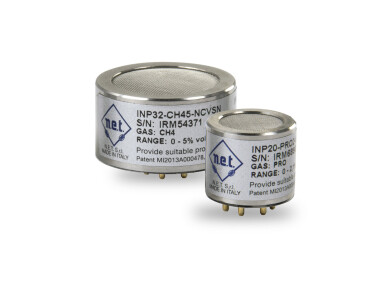Measurement and Testing
Bronkhorst Measure Super Critical Fluids for Carbon Capture
Apr 15 2015
Bronkhorst® Coriolis instruments have been successfully used for many years by Oil & Gas research and development centres, whether directly within their own R&D facility or indirectly through funded Technical Institute or University research. More recently, there has been a noticeable shift towards a greater understanding of the benefits of super-critical fluids and, specifically, the effects of super critical Carbon Dioxide on various materials utilised within pipeline systems for Carbon Capture and Enhanced Oil Recovery processes. Supercritical carbon dioxide is used to enhance oil recovery in mature oil fields.
Across other industries, there is also the possibility of using 'clean coal technology' to combine enhanced recovery methods with carbon sequestration. The CO2 is separated from other flue gases either pre- or post-combustion, compressed to the supercritical state, and injected into geological storage, possibly into existing oil fields to improve yields. At present, only schemes isolating fossil CO2 from natural gas actually use carbon storage, (foe example the Sleipner gas field), but there are many plans for future CCS schemes involving pre- or post- combustion CO2. Furthermore, there is also the possibility to reduce the amount of CO2 being released into the atmosphere by greater use of biomass technologies to generate power and, again, sequestering the CO2 produced. By using gasifiers instead of conventional furnaces, coal and water is reduced to hydrogen gas, carbon dioxide, and ash. The hydrogen gas can be used to produce electrical power in combined-cycle gas turbines, whilst the CO2 is captured as above, compressed to the supercritical state, and injected as previously. Increased research into greater understanding of the unique properties of supercritical CO2 ensures that ever more practical uses can be found thereby defining it as a resource rather than a by-product simply released into the atmosphere.
A fluid like carbon dioxide is difficult to measure as it shifts towards the inter-phase stage between being a liquid and a gas. For CO2 this occurs at temperatures >31.1°C and pressures higher than approx. 72.9 bara. Under these conditions, physical properties such as density (ρ) and heat capacity (Cp) change very rapidly with only small variations in either pressure or temperature. This makes an accurate mass flow measurement, perhaps based on the thermal principle, very difficult.
Bronkhorst mini CORI-FLOW™ instruments offer a specific solution. In part this is because of the instruments independence to physical properties provide a true mass flow measurement, but also because they are pre-designed to directly control both valves and pumps. The true mass flow of the molecules is measured, regardless of whether the fluid is in gas phase, in liquid phase or indeed somewhere in between. Experiences in the field have proven that this principle of measuring is very accurate and reliable. For control applications Bronkhorst can offer a flow meter with on-board PID algorythms close coupled to either a metal sealed, pressure actuated control valve or directly controlling the motive force generated by a suitably sized pump.
Supercritical carbon dioxide is seen as a promising green solvent due to its non-toxic nature and as a readily available resource often generated as a by-product from other industrial processes. Furthermore, separation of the reaction components from the starting material is much simpler than with traditional organic solvents.
Bronkhorst also have experience with super critical Carbon Dioxide in other areas of industry including decaffeination, active ingredient extraction, the sterilisation of medical materials, supercritical fluid deposition, microelectronics solvent processes, the faming of polymers, chemical reaction enhancement and super-critical gas chromatography .
Technical specification: Instruments rated to 400 bar, accuracy of +/-0.2% Reading, certified for ATEX Zones 1 and 2, on-board PID control is standard, as is over-run protection and a self-learning function, with a turn-down ratio of 2000:1. Flow rates as low as 50 milligrams per hour have easily been achieved within a surprisingly compact physical unit ('the smallest Coriolis instrument in the world'). Multi-parameter instrument with flow, density & temperature outputs. This particular application suited a Badger Valve although virtually any actuation device can be integrated, direct pump control, other types of control valve or indeed shut-off valves can be engineered depending upon the process conditions as required. Multibus communication is also possible, RS232/RS485, Modbus, Profibus, EtherCat, etc.
For more information on the Bronkhorst Coriolis instrument range please email us or Tel: 01223 833222.
Please click here for further information.
Digital Edition
PIN 25.5 Oct/Nov 2024
November 2024
Analytical Instrumentation - Picturing Viscosity – How Can a Viscometer or a Rheometer Benefit You? - Sustainable Grease Formulations: Evaluating Key Performance Parameters and Testing Method...
View all digital editions
Events
Dec 03 2024 Dusseldorf, Germany
Dec 08 2024 Anaheim, CA, USA
Turkey & Black Sea Oil and Gas
Dec 11 2024 Istanbul, Turkey
Dec 19 2024 Aurangabad, India
Jan 20 2025 San Diego, CA, USA





















